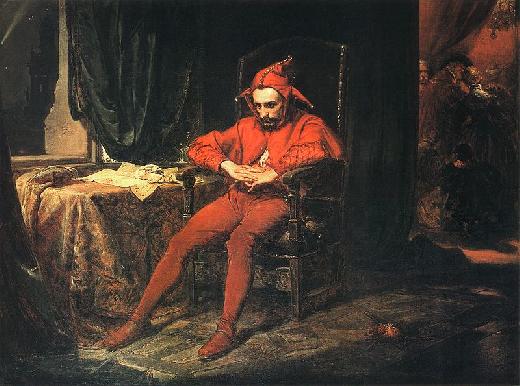Stanczyk want to weigh in on WikiLeaks and the many tangents that a WikiLeaks article can take.
I do not think Julian Paul Assange is correct; In fact I think he is breaking many laws and violating many standards of ethics. So US Supreme Court and US Attorney General Eric Holder listen up, so to speak.
First off, making threats like, ‘Do this or else I will do this” is an act of extortion. When I listen to NPR or read the New York Times or Philadelphia Inquirer, or even when I watch Fox News, I do not get threatened that act against their news/journalistic articles, I will have to bear the brunt of some kind of blackmail. Not even Rush Limibaugh gives voice to such as that. So if WikiLeaks is journalism, why does it make extortionate and/blackmail threats?
WikiLeaks and its supporters cannot espouse Free Speech and then attempt to deny the voices of other organizations via Denial-Of-Service attacks. That is thuggery to claim you deserve Free Speech rights, but then turn right around and deny others, their right to free speech on their web sites or in other endeavors. An awful hypocrisy. It also demonstrates a lack of understanding of Free Speech.
American has had the right of Free Speech longer than any other nation. As such, it has had to deal with many nuances related to Free Speech. It has long been acceptable to outlaw, yelling “Fire” in a movie theater or even to remove people from said theater for creating a disturbance. Free Speech does not allow such irresponsible or reprehensible actions. Free Speech also does not extend to people who make Hate Speeches or to people who incite violence. Those are not examples of Free Speech. Do you not see the principle that “Free Speech” cannot deprive others of their rights/liberties and be considered Free Speech.
Stanczyk has long been an IT worker. As such, data and information and the communication of such is governed by laws. These laws extend beyond national boundaries sometimes. Stanczyk saw how the latest “Cables” spanned such a breadth of data, that it covered many aspects of the human condition. For example, it was covered in sport news pages, because there instances of how Iran used sports to deal with internal political strife. Who would have thought that WikiLeaks would impact Sports? So too must there be data dealing with: HIPAA laws (privacy related to medical conditions), PI (privacy information and data) would seem to have been heavily violated. What about identity theft from WikiLeaks releases? Stanczyk likes his genealogy but also sees that Census data must be on ice for 72 years before being released to the public. So Free Speech and Freedom of Information has long had a defined context of limits.
Finally, the last concept is IP (Intellectual Property). WikiLeaks received stolen property from soldier Manning (whose legal/ethic problems are even worse than WikiLeaks). Assange might not have realized that when he received IP from Manning and that Manning stole this “valuable property” from the US Government, he not only violated receipt of stolen property, and violations of espionage, but also clearly violated many aspects of the Digital Millennium Act (both civil and criminal). By failing to return said information when the property owner demanded it, it made the WikiLeaks organization as a whole (including distributed agents) subject to confiscation of computer and other technology. This is best understood by comparing this to what happened in the matter of Apple Computer and Gizmodo on the iPhone prototype. IP is valuable and cannot be willfully stolen or received and cannot be denied from its rightful owner. There are many corporate espionage cases of late that also demonstrate the severity of IP theft and the civil/criminal aspects that accrue from those actions taken.
The many civil cases against Assange and WikiLeaks that come out of the distribution of data in violation of HIPAA, PI, or other identity theft matters and resulted in damage or losses of property or loss of life will keep lawyers around the world gainfully employed for a decade or more.
Assange is learning too late, that Journalists have editors and legal teams to vet stories against laws and customs and matters of ethics. Journalists do not make threats.
As Stanczyk sees it, the Electronic Frontier Foundation (EFF) and Russian Premier Putin have come down on the wrong side of this issue. Putin seems out of place for sure, when one considers how many Russian journalists have been killed. This jester has appreciated Mr Putin’s work with respect to Poland of late and has even written a note of consolation to Mr Putin when his nation has come under attack by terrorists, so it pains this jester’s Slavic soul to call Mr Putin out on this issue — just because Putin sought to lash out against the US in order to make points for Russia on the backs of this difficult issue.
Time will tell on this matter.
 This Jester does not recall so much discussion on a president’s genealogy / vital records before. So as the President goes off to Europe, we once again hear about his ancestry ( Kenya, Hawaii, IRELAND). President O’bama through his mother has a 3g grandfather named Falmouth Kearney (and 3g grandmother Charlotte Holloway — let’s not forget the women) from Moneygall, (County Offaly), Ireland. The President’s direct ancestry back through the Dunham lineage can be proudly found at Moneygall’s website.
This Jester does not recall so much discussion on a president’s genealogy / vital records before. So as the President goes off to Europe, we once again hear about his ancestry ( Kenya, Hawaii, IRELAND). President O’bama through his mother has a 3g grandfather named Falmouth Kearney (and 3g grandmother Charlotte Holloway — let’s not forget the women) from Moneygall, (County Offaly), Ireland. The President’s direct ancestry back through the Dunham lineage can be proudly found at Moneygall’s website.






















You must be logged in to post a comment.